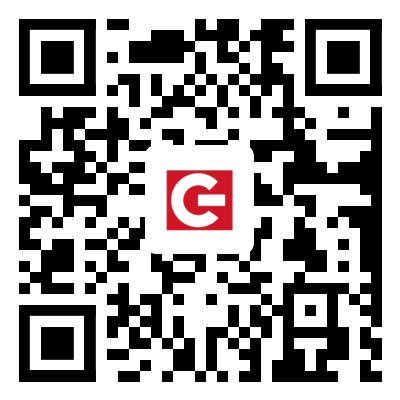What Is an Oximeter Used For
2024-09-12
An oximeter is a small medical device that measures the level of oxygen in your blood and provides information about your heart rate. It is commonly used in hospitals, clinics, and at home by individuals to monitor their health. In recent years, the use of oximeters has grown due to their importance in detecting early signs of respiratory issues and other conditions that affect oxygen levels. We’ll explore what an oximeter is used for, how it works, and why it is an essential tool for health monitoring.

1. What Is an Oximeter?
An oximeter, also known as a pulse oximeter, is a non-invasive device that clips onto a part of the body, usually a fingertip, to measure the amount of oxygen in the blood. It does this by using light sensors to detect changes in blood color, which vary based on the oxygen levels.
The device then displays two main readings:
- Oxygen Saturation (SpO2): The percentage of oxygen in the blood, with normal levels usually ranging from 95% to 100%.
- Pulse Rate: The number of heartbeats per minute, providing information about your cardiovascular health.
2. What Is an Oximeter Used For?
Oximeters are widely used in various medical and health scenarios. Here are some of the most common applications:
Monitoring Respiratory Conditions
Oximeters are essential for people with respiratory conditions like asthma, chronic obstructive pulmonary disease (COPD), or pneumonia. These conditions can reduce the lungs' ability to absorb oxygen, leading to lower oxygen levels in the blood. Regular monitoring with an oximeter helps detect drops in oxygen saturation, allowing for timely intervention and treatment.
COVID-19 Monitoring
During the COVID-19 pandemic, oximeters became critical tools for early detection of hypoxia (low oxygen levels), a common symptom of severe COVID-19 cases. Even in mild or asymptomatic cases, individuals with COVID-19 may experience "silent hypoxia", where oxygen levels drop dangerously low without noticeable symptoms. Monitoring oxygen saturation at home with an oximeter can help patients seek medical care before the condition worsens.
Managing Heart Conditions
For individuals with heart disease or those recovering from a heart attack, oximeters can track heart rate and oxygen levels. Irregularities in heart function can impact how efficiently oxygen is transported throughout the body. Oximeters provide vital information about heart performance and can signal when a person might need medical attention.
Monitoring During and After Surgery
Oximeters are standard equipment during surgeries, particularly those involving general anesthesia. During surgery, an oximeter monitors the patient's oxygen levels to ensure that they remain within a safe range. After surgery, the device is also used to track recovery and prevent complications like respiratory depression or hypoxemia.
Exercise and Fitness
For athletes and individuals engaging in high-intensity workouts or activities at high altitudes, oximeters are helpful for assessing how well their body is using oxygen. At high altitudes, oxygen levels in the air are lower, and people might experience altitude sickness. Oximeters can help monitor oxygen levels during exercise or in situations where oxygen levels are expected to fluctuate.
Sleep Apnea
Individuals with sleep apnea, a condition where breathing repeatedly stops and starts during sleep, can benefit from using an oximeter. It helps monitor nighttime oxygen levels, detecting drops that indicate interrupted breathing. Continuous monitoring can help diagnose sleep apnea and ensure effective treatment, such as CPAP (Continuous Positive Airway Pressure) therapy.
3. How Does an Oximeter Work?
A pulse oximeter works by shining light through the skin, usually on the fingertip. It measures how much light is absorbed by the blood and tissues. Blood that is rich in oxygen absorbs light differently than blood with lower oxygen levels. The device uses this information to calculate the oxygen saturation (SpO2) and pulse rate. This non-invasive method is quick and painless, providing results within seconds. Modern pulse oximeters are small, portable, and easy to use, making them ideal for home use.
4. Why Is an Oximeter Important?
Oximeters are valuable tools because they provide real-time data on a person’s respiratory and cardiovascular health. The information they provide can help:
- Detect early signs of respiratory problems: Low oxygen levels can indicate the onset of a respiratory issue, allowing for timely treatment.
- Monitor chronic conditions: Individuals with chronic lung or heart conditions can use an oximeter to ensure their oxygen levels remain stable.
- Manage treatment plans: Doctors may recommend using an oximeter to track the effectiveness of treatments, such as oxygen therapy or medication.
5. When Should You Use an Oximeter?
You might use an oximeter if you or a loved one:
- Has a respiratory condition like asthma, COPD, or COVID-19.
- Is experiencing symptoms such as shortness of breath, chest pain, or dizziness.
- Has been advised by a doctor to monitor oxygen levels.
- Engages in high-altitude activities or high-intensity sports where oxygen levels can drop.
An oximeter is a crucial device for monitoring oxygen levels in the blood and heart rate. Whether managing chronic health conditions, monitoring recovery after surgery, or assessing fitness, it provides valuable insights into your respiratory and cardiovascular health. Simple to use and highly effective, pulse oximeters are indispensable tools in ensuring that your body is receiving the oxygen it needs to function properly.
KINGSTAR INC is a large reliable and professional manufacturers and suppliers for face mask, simple operation covid-19 self test rapid antigen test, covid-19 self test rapid antigen test. We are very famous in China. Find detailed product information on our website at https://www.antigentestdevices.com/. Should you have any inquiries, don't hesitate to contact us at info@nbkingstar.com.



